Can any bike justify a £12.5k price? The new Pinarello Dogma can, despite only marginal improvements
The hyper-expensive new Dogma backs up the pricetag with mind-bending performance
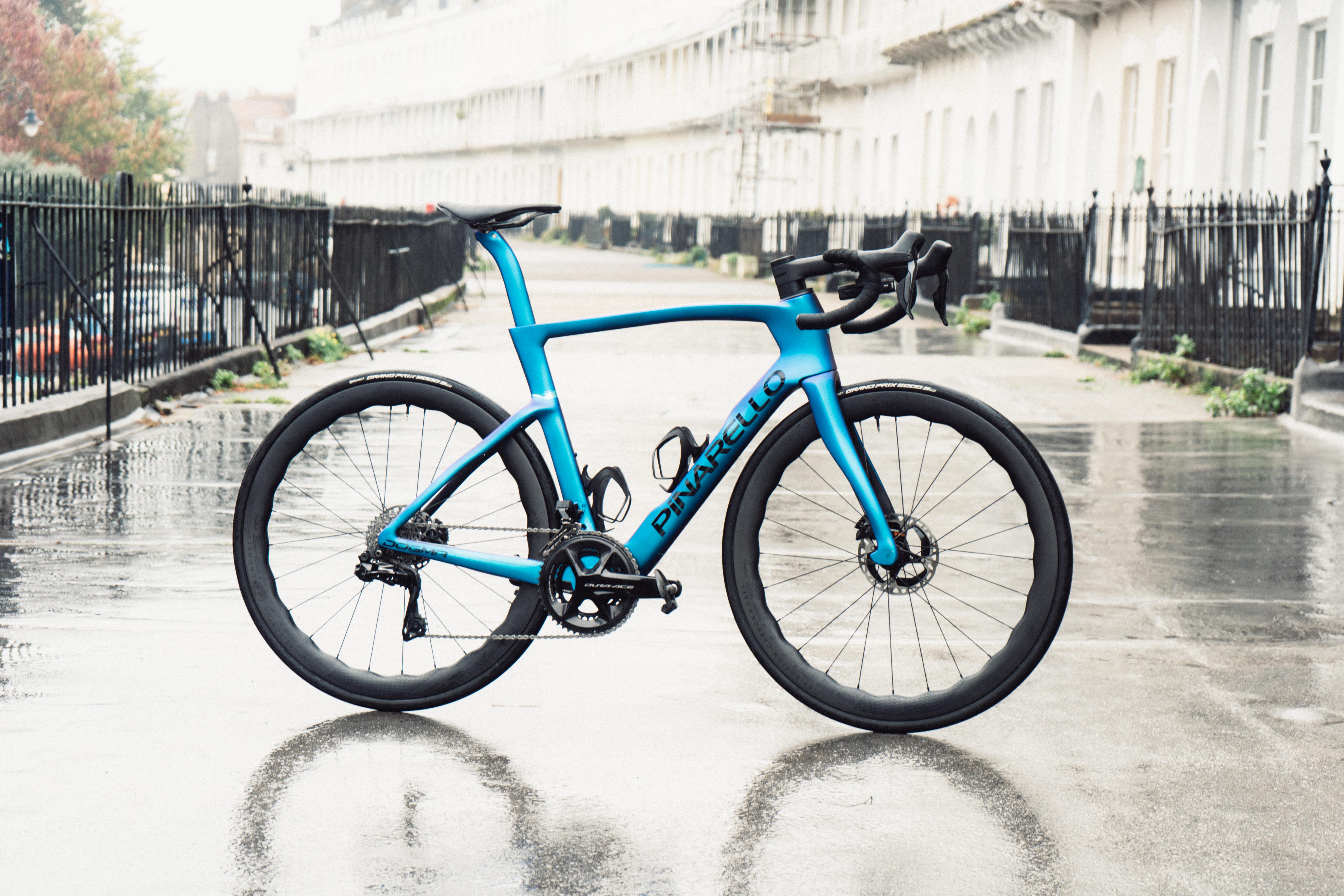

Verdict
Truly a near-flawless all-rounder. Incredible handling, beautiful looks, aero credentials, a spec list to die for, and that intangible Italian-ness without anything insane.
For
Handling so good it'll leave you speechless Good looks without sacrificing aero Best-of-the-best build White Industries hubs.
Against
More expensive than the Factor Ostro VAM for similar performance
Score
94%
At the launch of the latest, greatest Dogma F I was slightly lamentatious about the fact that, on paper, it wasn’t actually any better than the old one. Marginal CDA improvement, and a few grams shed, plus the addition of quite a bulbous ‘aero keel’ fore of the bottom bracket. Nothing much to write home about.
After throwing a leg over and smashing about in the Dolomites for a few hours in truly biblical rain my initial misgivings did begin to dissolve like so much sugar. A launch ride is usually designed to showcase the best of the bike in a landscape designed to wow, and it did very much that; the handling was superbly good, and the climbing characteristics sublime, but initial impressions on a press trip don’t a good review make.
Since that wonderful launch ride I’ve been smashing about on the new Dogma on my home roads. Familiar test loops designed to see how it actually matches up against other bikes. Also, in the interim, we’ve taken the Dogma and 10 other superbikes to the wind tunnel so we are actually in a position to say how it performs in a more numerical sense.
The short story is the latest Dogma is superb. It’s functionally no different to the old one besides a small tweak to the fork geometry, but even amongst the best road bikes on the market it stands apart as something truly special, in a way very few bikes have felt.
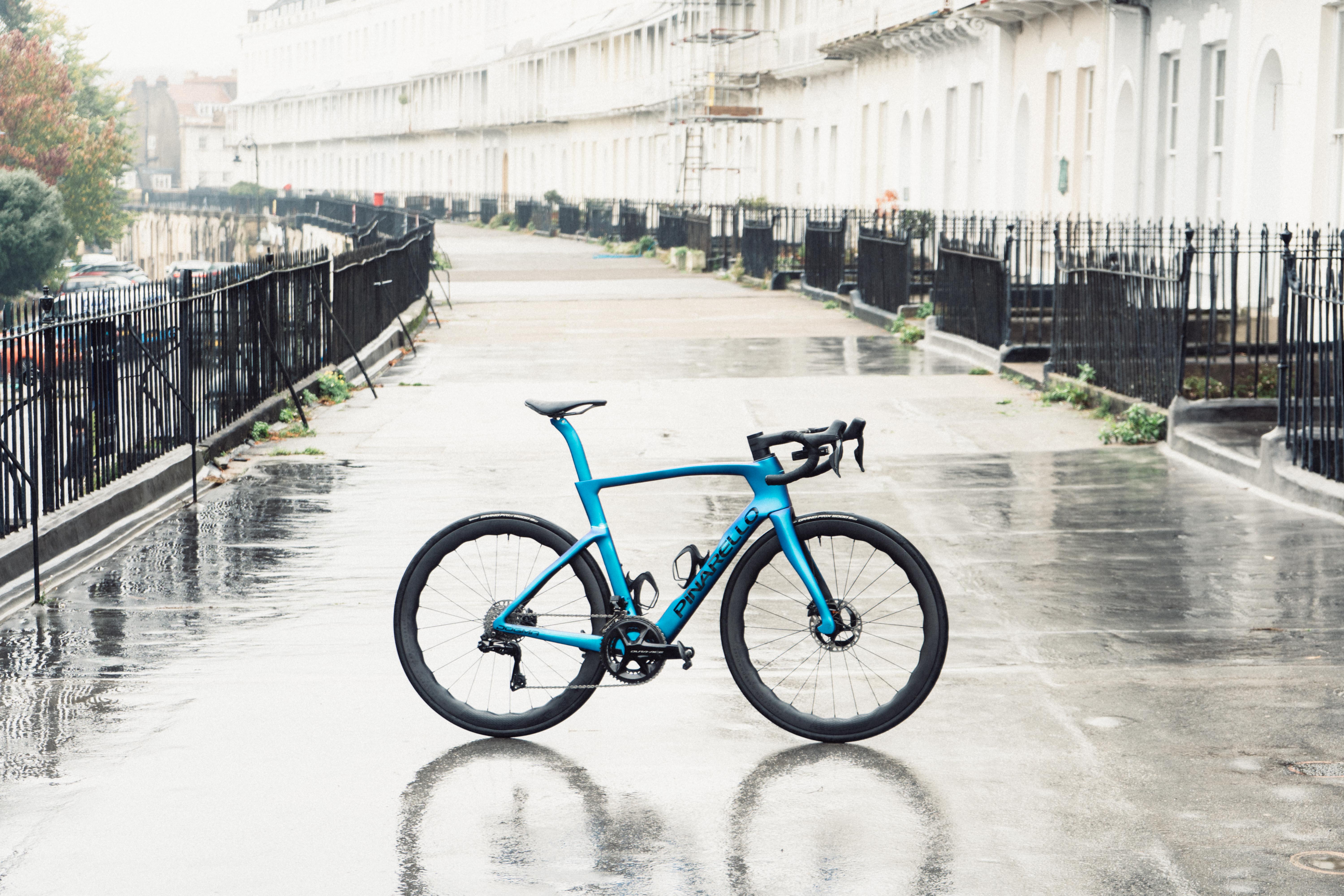
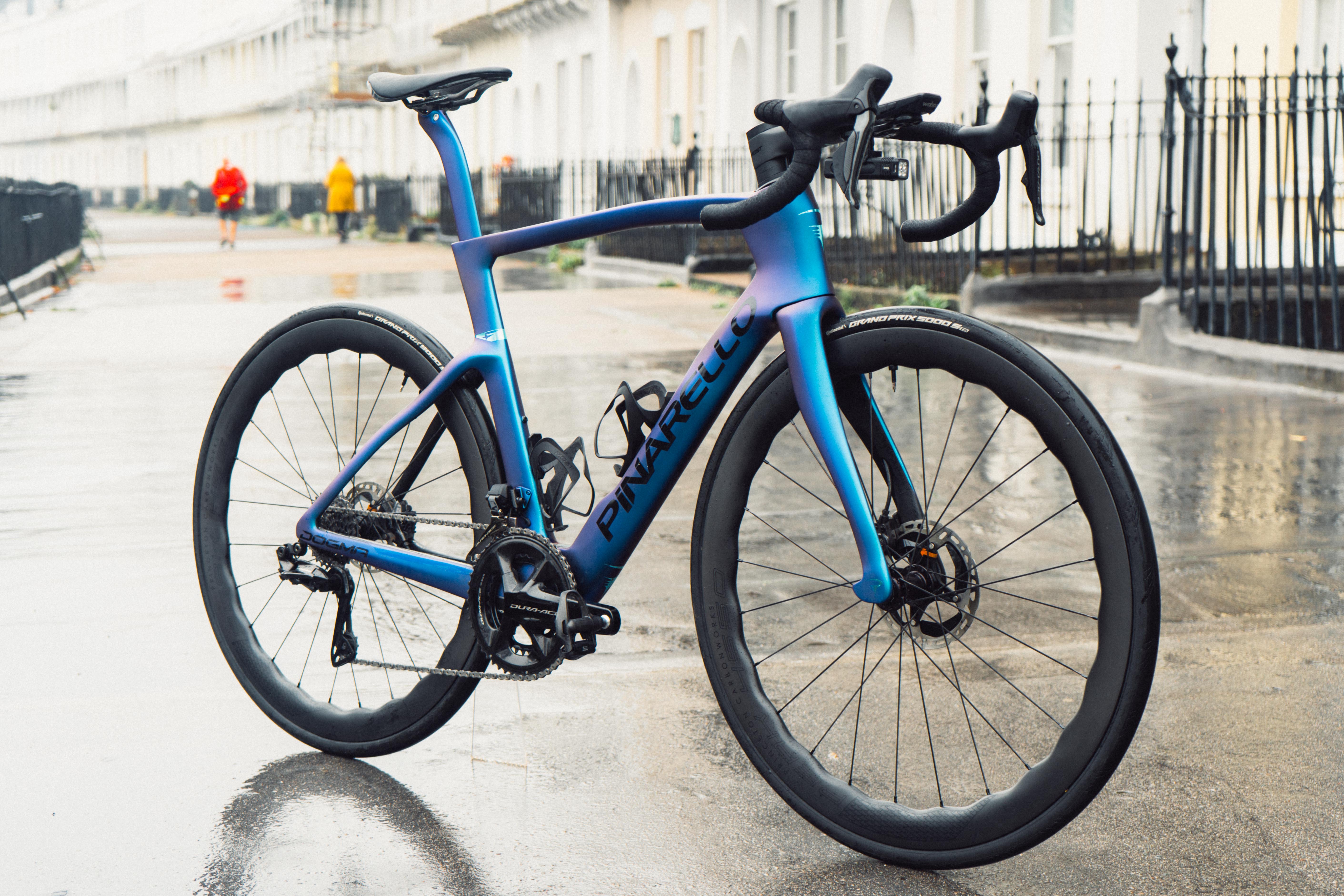
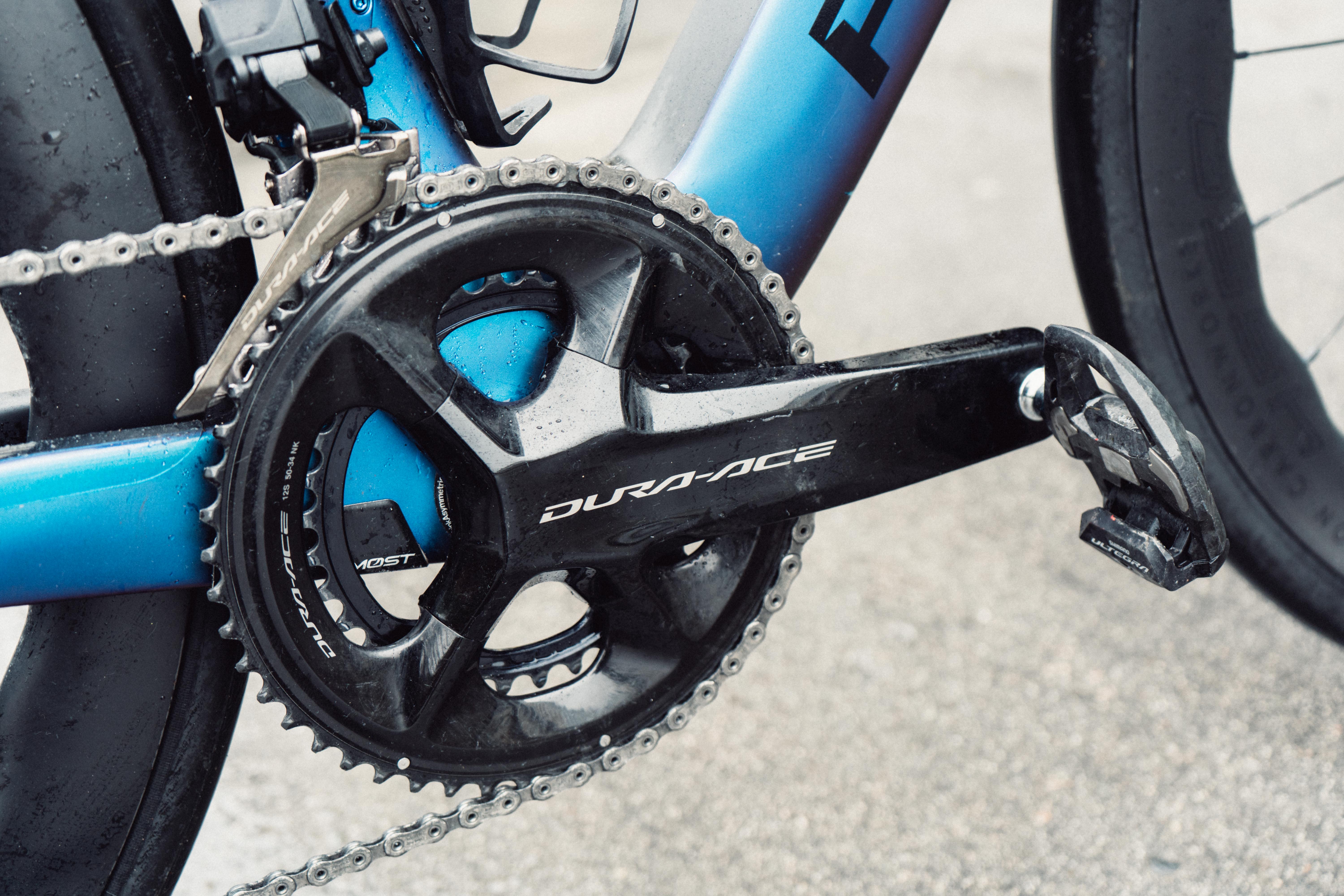
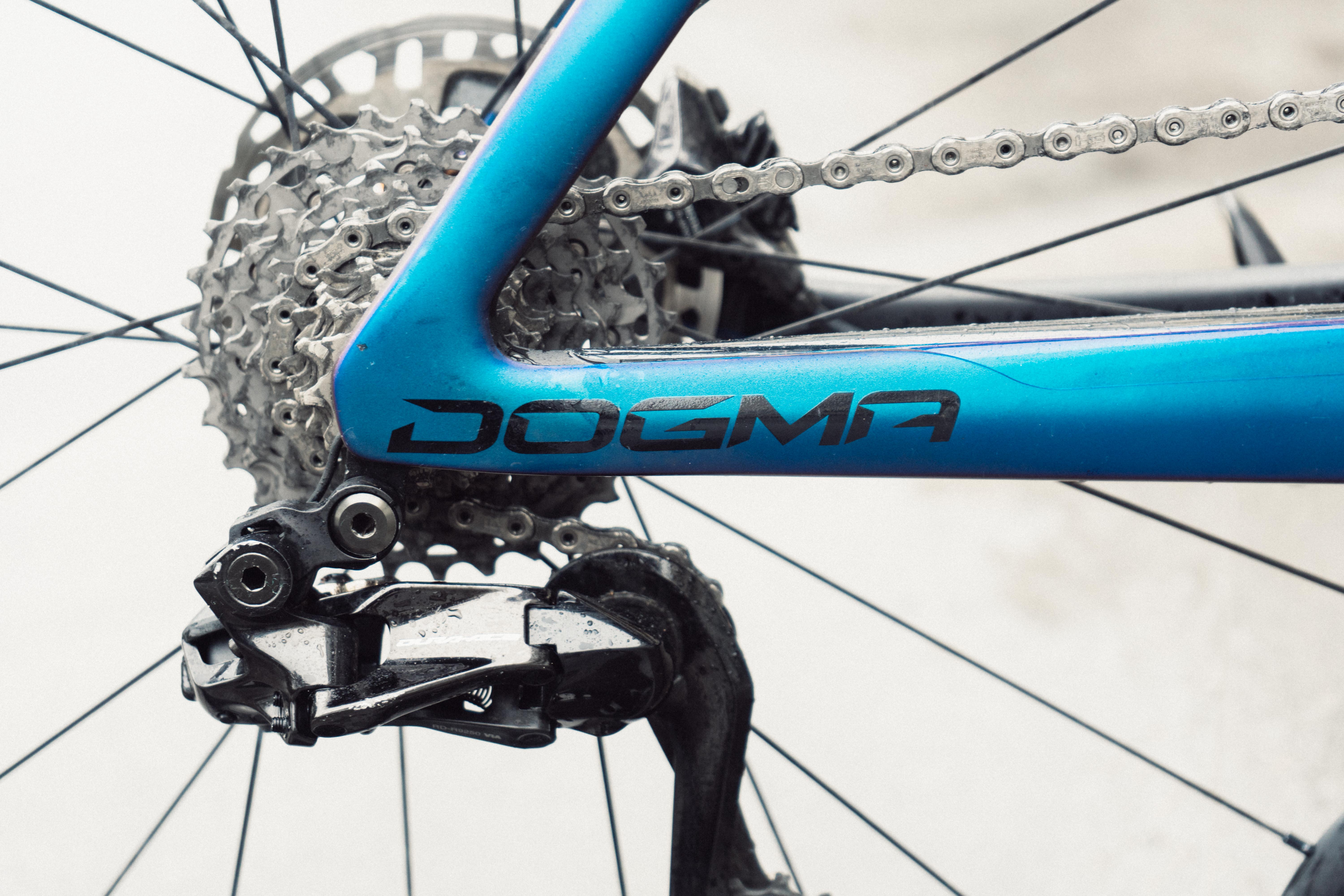
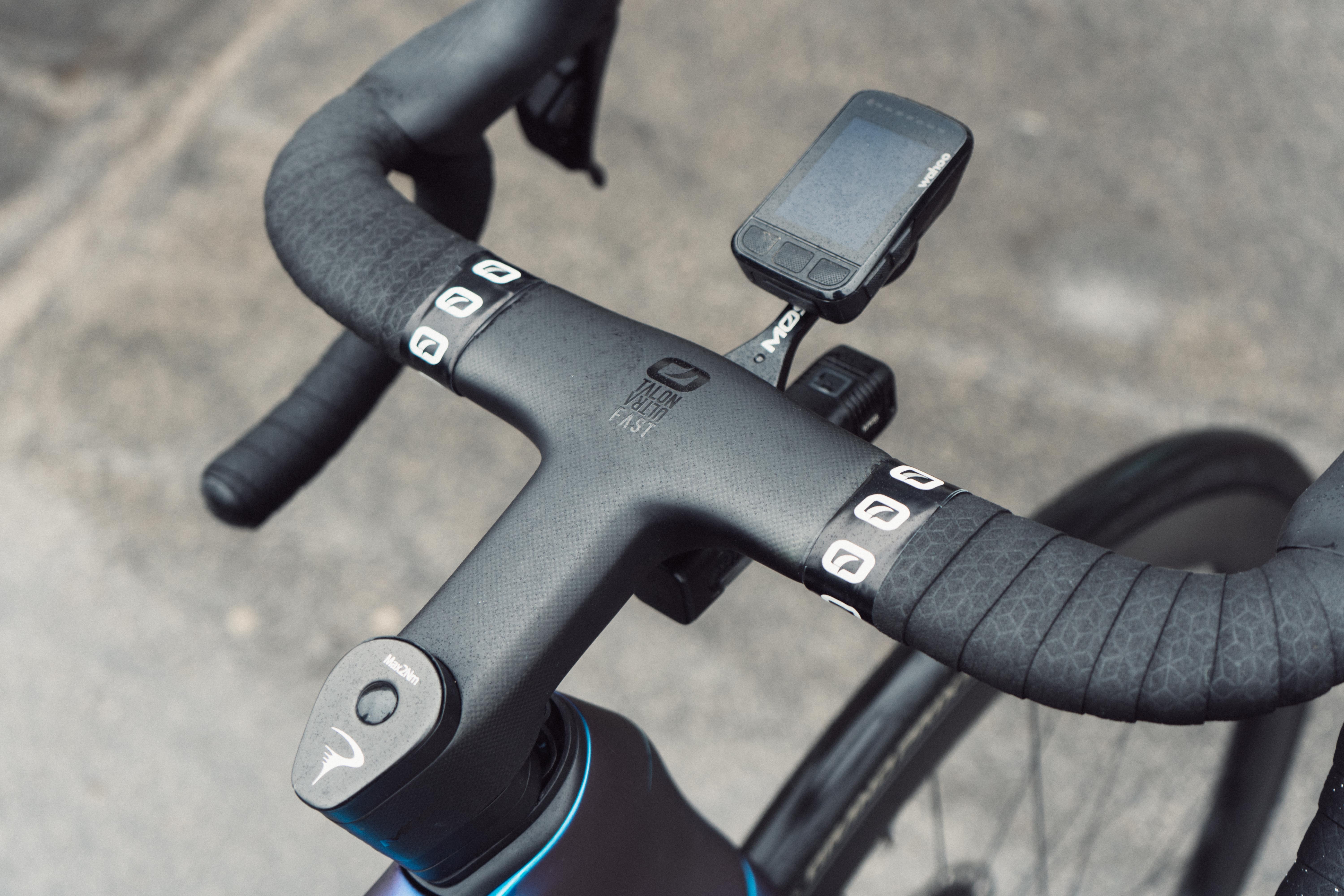
Design and aesthetics
It’s a looker, that’s for sure. There’s so much of what I like to think of as ‘Café Factor’ here - whereby other riders at the café will go ‘oooh, aaah, isn’t it gorgeous’ that it puts everything else in the shade. I do rock up to club rides on an embarrassment of riches pretty frequently, and I’ve definitely turned heads on bikes like the Basso Diamante SV, but never before have I had friends sheepishly ask if they can have a go before. There’s just something about it that is completely beguiling.
The paint helps, as does the matching seatpost and blanked out driveside dropouts. These have some claimed aero benefits but I think the greater benefit is that they look cooler. The curves have mellowed over the years too, which helps. The fork, and especially the rear stays, are far less wibbly-wobbly, offset in this case to some degree by the extremely wavy Princeton Peak 4550 wheelset, though more on that presently.
The biggest visual difference over the old one in terms of the silhouette is the deepened section behind the head tube. At its base it traces quite a sharp angle on a bike so replete with flowing lines, but that’s really nit picking. It looks beautiful, that’s all there is to it.
Get The Leadout Newsletter
The latest race content, interviews, features, reviews and expert buying guides, direct to your inbox!
Aesthetics aside there has been some design work going on in terms of drag reduction. You can read up on all of the frame and design updates in our Dogma news piece from when the bike launched. Pinarello claims an improvement of 0.2% in terms of the coefficient of drag. That is, I'm afraid, basically negligible. To put it into context swapping from the fastest to the second fastest helmet in our wind tunnel helmet test resulted in a difference of 0.6%, and would net you a 7 second gain over a 40km time trial.
A 0.2% improvement, if you ignore the rider position and just take the bike, would gain you 2 seconds over a 40km time trial, riding at 250 watts. Or, alternatively, the new bike requires 82.14 watts to hold 40km/h, as opposed to 82.3 watts for the old model.
This is so small a difference as to be pointless for all but the top flight riders on the Ineos roster, who have likely exhausted all other wattage gains. For us mortals, aside from the weight saving, it's basically just as fast as the old one.
Greater strides have been made in the cockpit department, and the new Talon cockpit is mostly lovely. It comes in a great variety of widths and reaches, and the tops especially have been slimmed down so riding on them (as I tend to while climbing) is much more pleasant.
The flare is noticeable, and to my tastes it's perhaps a little too flared, but I suspect I'm in the minority. The drops have a little flex to them that I also found on the cockpit of the F7, and while it wasn't terrible it was noticeable when out of the saddle but never to a detrimental degree.
The fact that the cockpit is pretty good is noteworthy because, thanks to a new ovalised steerer tube designed to improve cable routing, you can’t run anything else.
One last thing to shout about is that it has a threaded, Italian bottom bracket. Music to my ears, and to the ears of any home mechanic. Mine was utterly creak free, but more than that it just shows that you can have hyperbike performance without having to have some mental bottom bracket standard too.
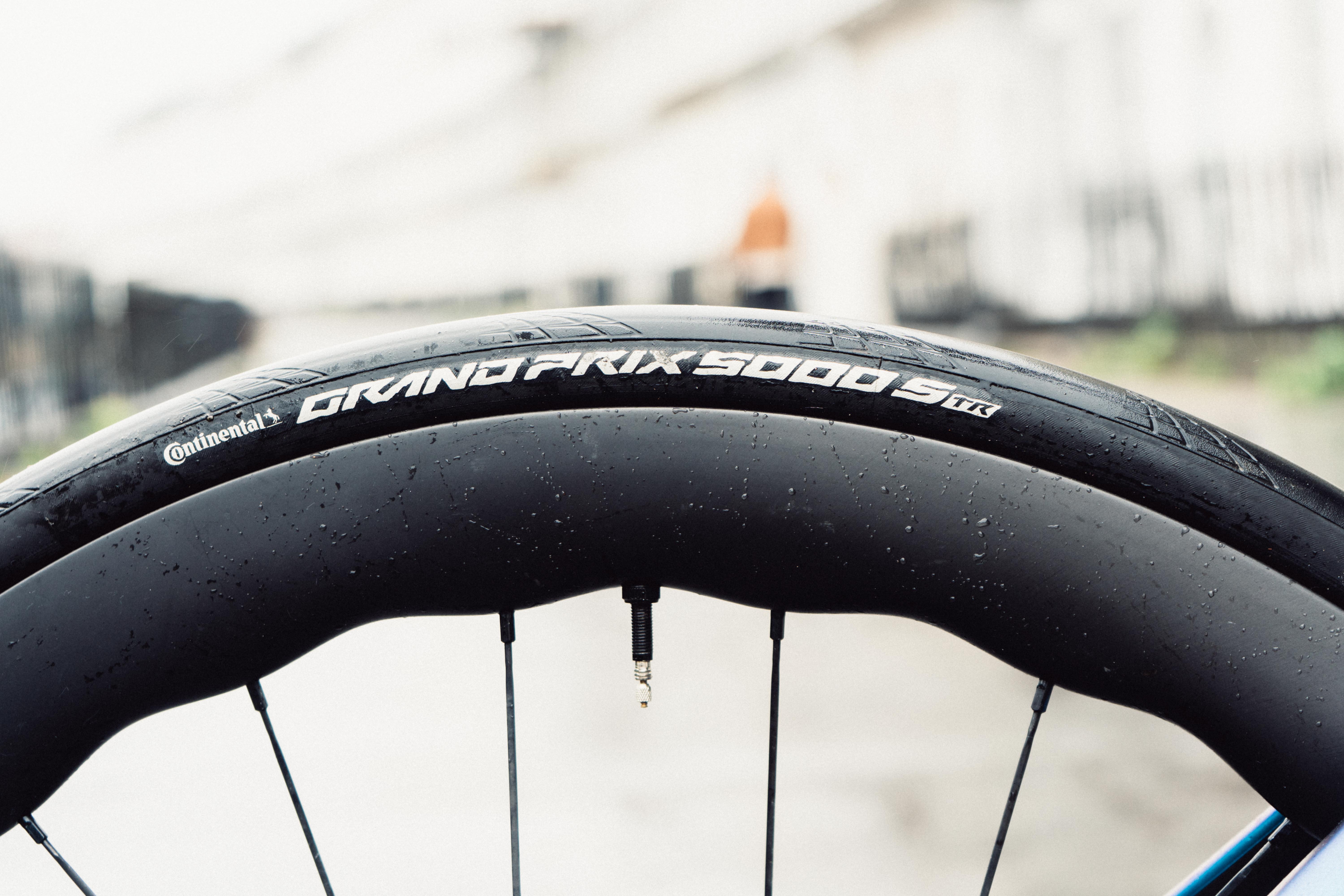
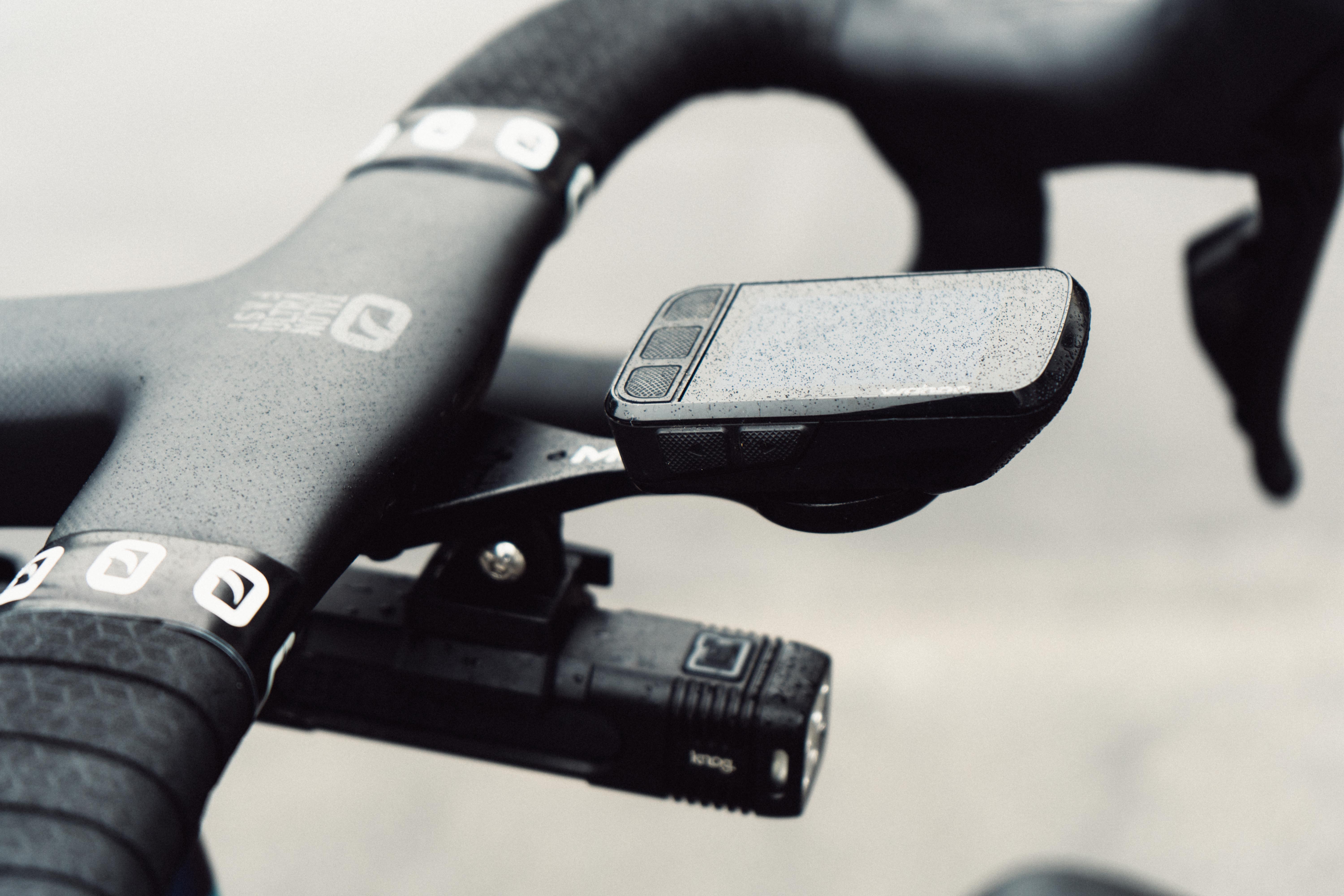
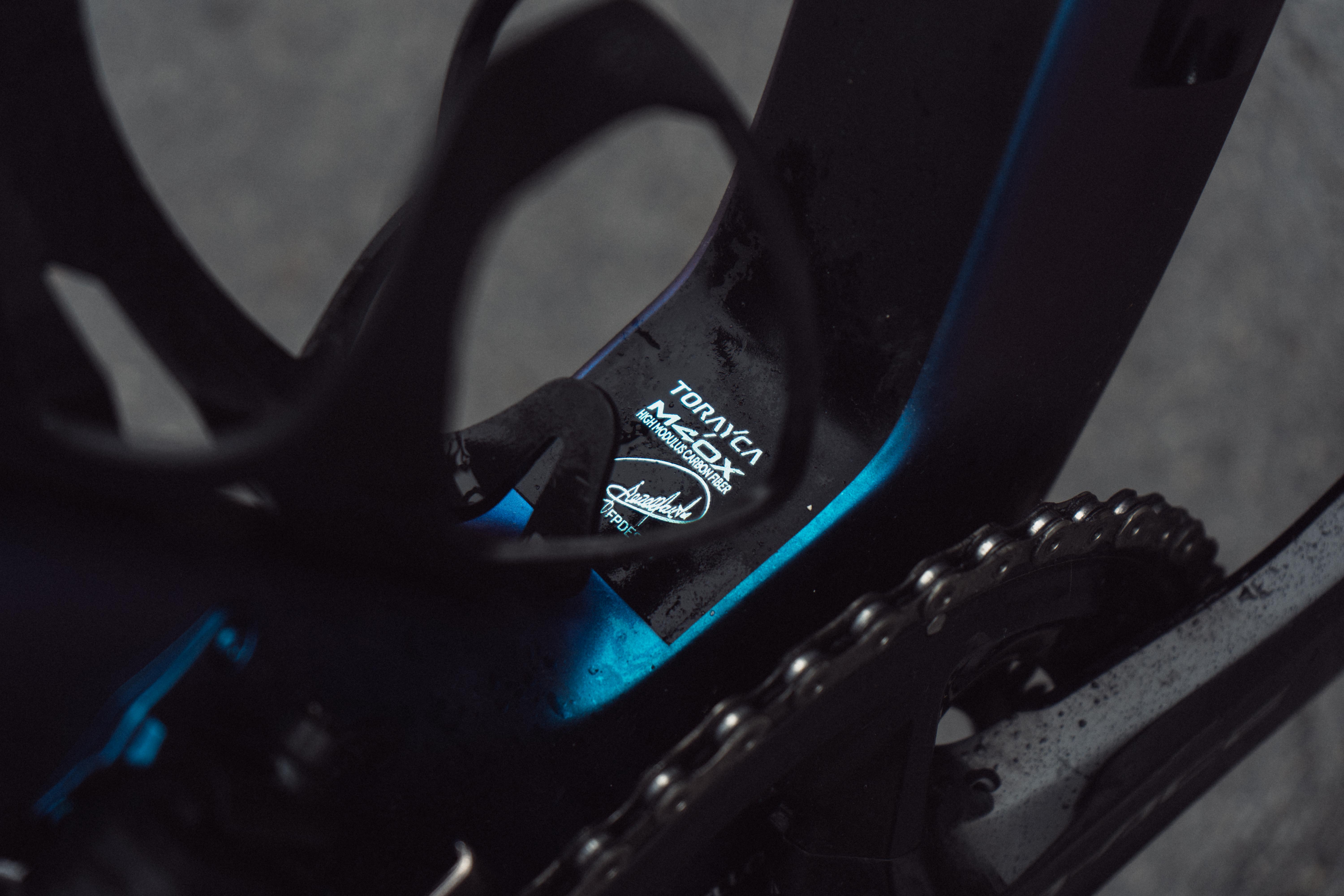
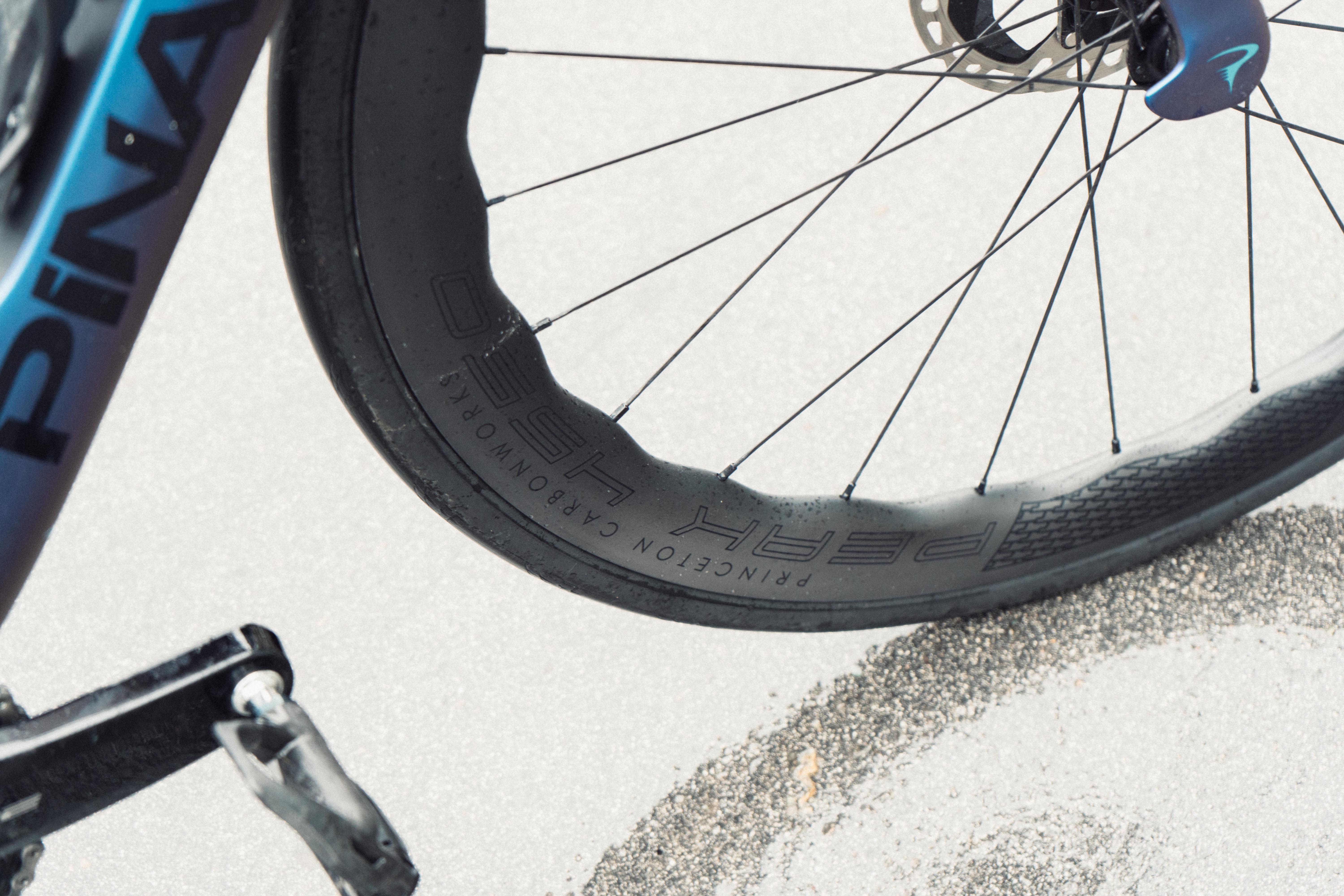
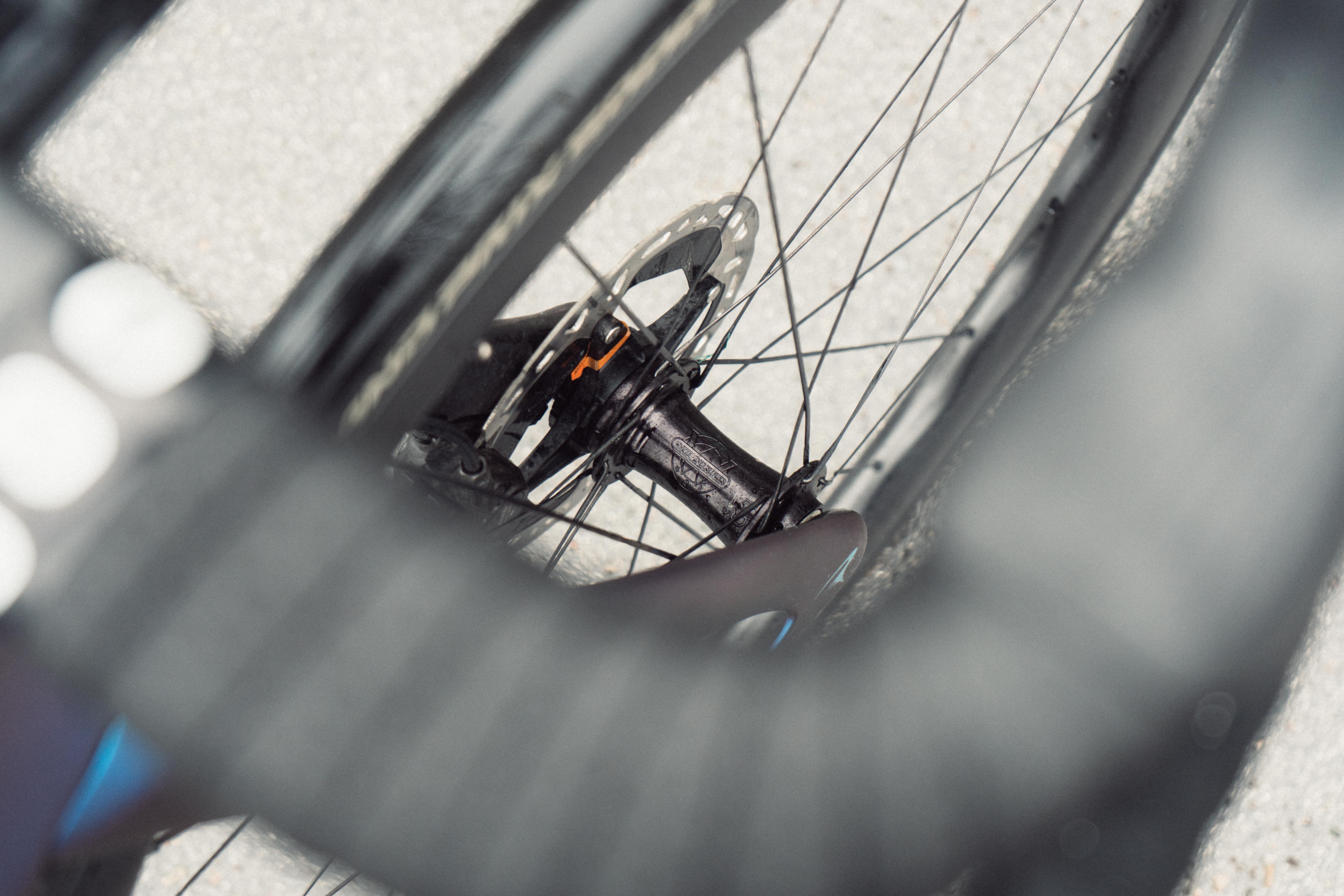
Performance
This job affords me the great privilege of testing out some truly amazing bicycles, but few have left such an impression on me as the latest Pinarello Dogma F. It is staggeringly good, even amongst a cohort of other hyper-expensive Italian superbikes (see my reviews of the Basso Diamante SV, Colnago V4Rs, Bianchi Speciallisima, and Colnago C68 for reference).
Just to tick off the slightly dull aero chat for a second, we concluded that it’s basically as good as any of the superbikes on the market in that regard, so I’m not going to profess that I can feel that it carries speed well. It’s rapid in the wind tunnel, so if you’re dropping some serious cash you can at least rest easy that it’s not going to be a big carbon anchor… though that does you out of a great excuse for getting dropped.
Where it really excels is in the handling. I never rode the old one, and the only real difference is in the fork rake, but it handles with such confidence and poise it left me reeling. Even on the launch ride this was clear; being able to fling a bike into a rutted hairpin at full speed in driving rain, and overtaking motorcycles in the process, isn’t something every bike would be able to facilitate. I’ve descended faster than I ever have before on the Dogma, and with more enjoyment too. Some bikes are rapid downhill but just a bit scary - the Canyon Ultimate is one such bike when the descents get really steep - but here it’s just calm, collected, and almost serene.
My initial test was on a bike with a 90mm stem (I have a rather short torso and a historic back injury sadly), but my review unit came with a 120mm cockpit. It was only a small change but having more weight over the front wheel only improved matters in the handling department, which is really saying something. The only drawback in this case is the seatpost, which came in a 20mm setback option, so I had to slam the saddle right forward. From what I can gather from the spy shots I got of Ineos’ special superlight Dogma frames the team has seatposts with a lesser degree of setback. I did check with Pinarello, and a lesser setback option is available upon special request, so if this is of concern to you I advise you get a bike fit first and see.
Actually, whatever happens if you’re dropping over 12 grand on a bike I’d get a bike fit anyway. Something Pinarello does very well is offering a pretty massive range of sizes and cockpit configurations so you’re almost definitely able to find one that’ll fit.
With a long stem, and such a stiff, light rear end I did find the rear wheel tended to skip off the ground when in an all out sprint, but that’s a small price to pay for the handling and climbing prowess. Uphill the Dogma F feels magnificent. The weight, at 7.2kg, is absolutely competitive. It’s basically the same as the similarly all-round Factor Ostro VAM, with similar depth wheels. It’s not at the UCI limit, but those 600g are really of no impediment unless you’re tackling some sort of mega hill, and even then with a different set of wheels you could easily go lighter.
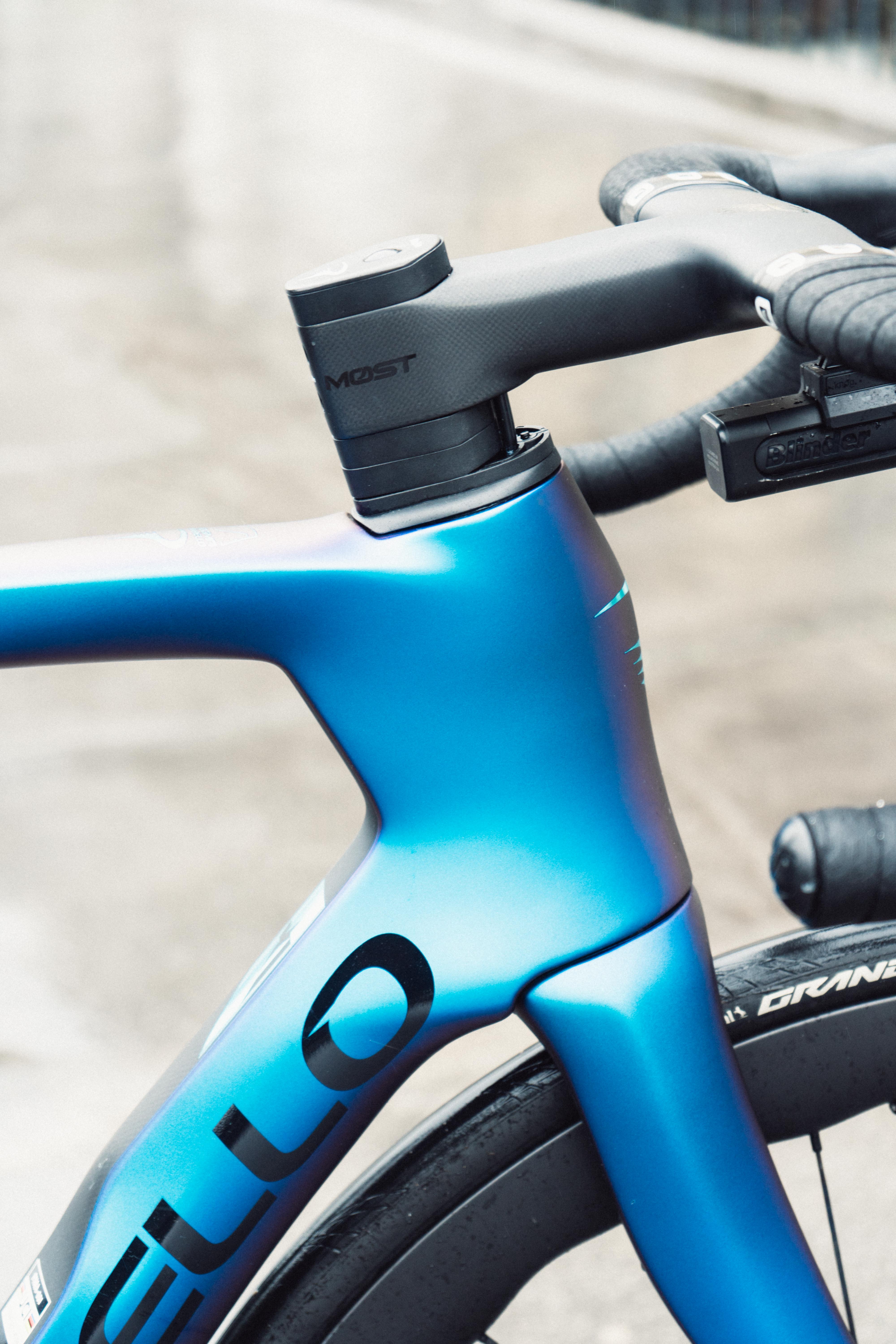
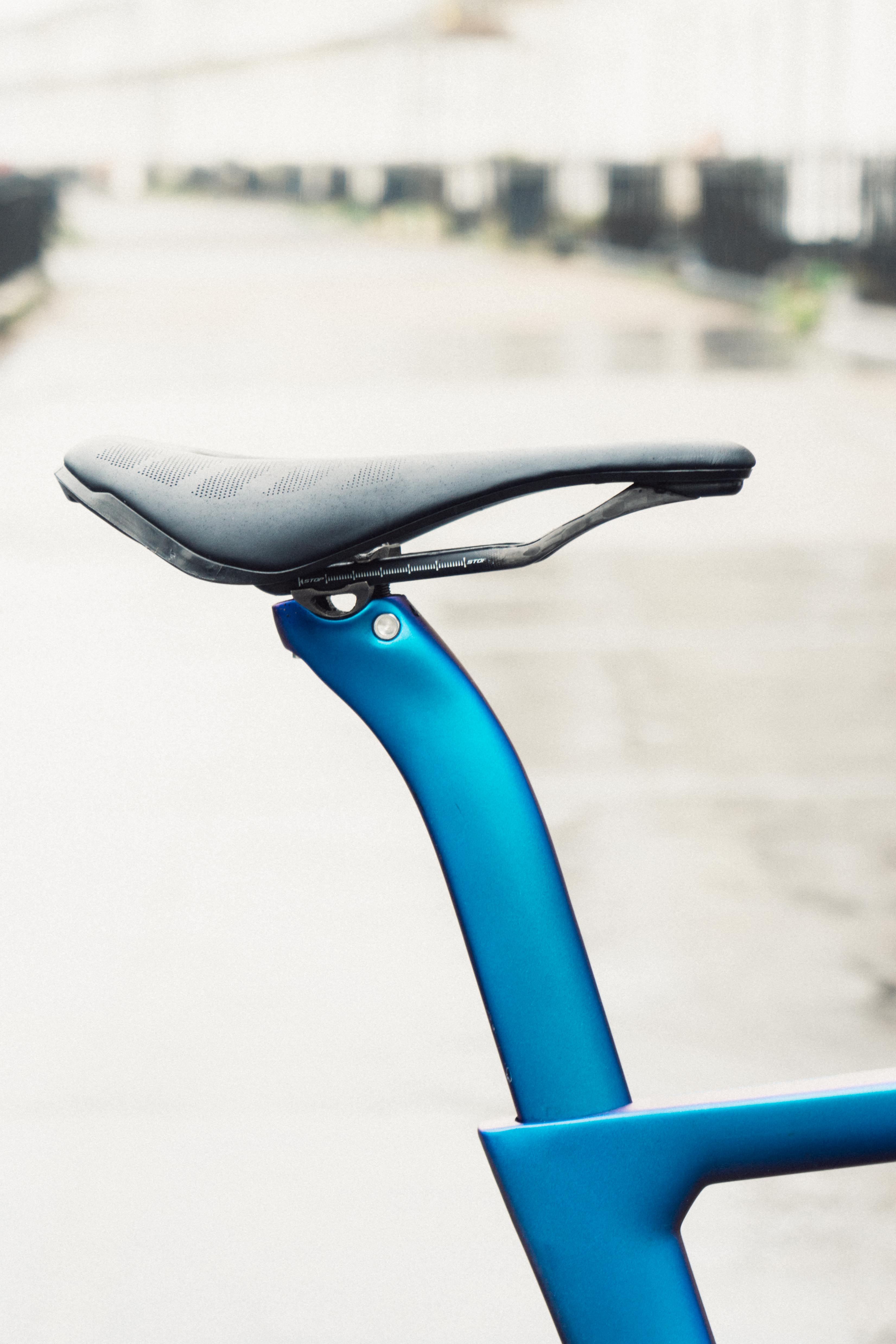
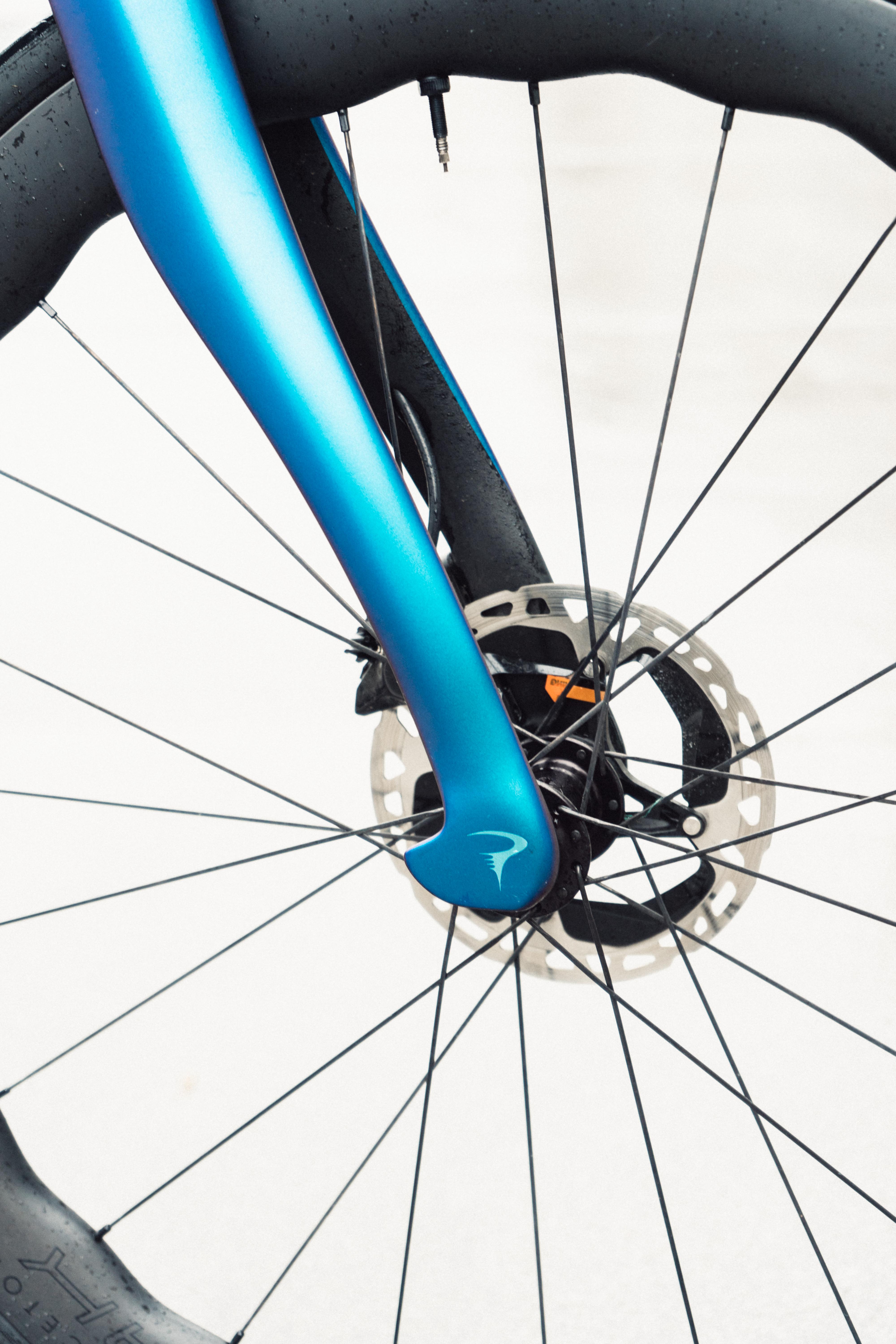
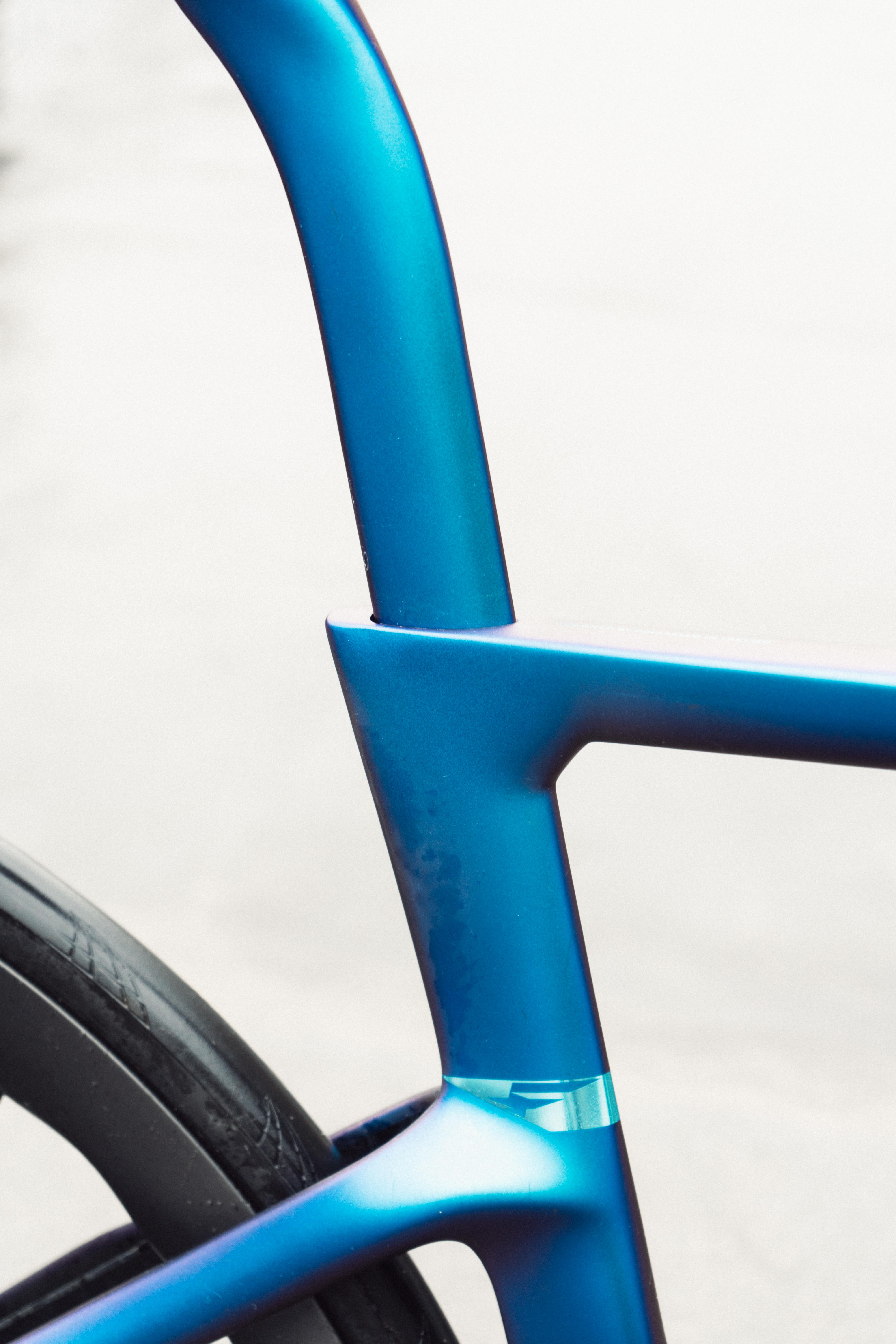
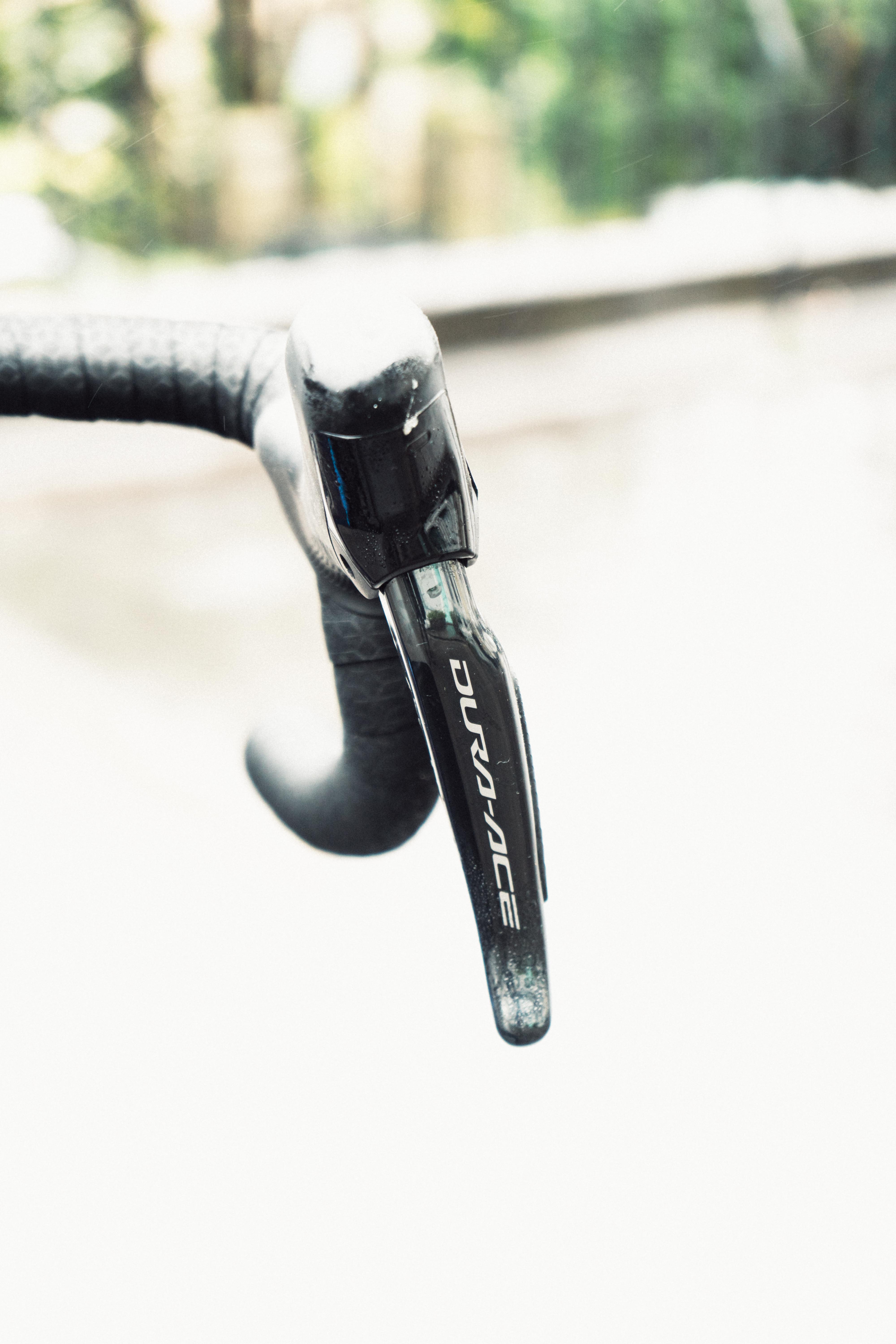
I don’t think you should swap the wheels though. These Princeton Peak 4550 numbers are beautiful, especially when set up on White Industries Hubs. They really are a perfect accompaniment to the package. On some bikes I could see them almost outshining the frameset, but not the case here. The spin up is ballistic, in tune with the extremely stiff pedalling platform that comes primarily from the monumental bottom bracket shell. It is so big it makes the Italian threaded bottom bracket look rather diminutive.
Last but not least on this front is comfort. The Dogma F is, despite being a hyperbike on the speed and handling fronts, a very comfortable place to be. Some of this must be down to the curved seatpost, but it never felt harsh, jittery, or anything besides pleasant, even when riding at the absolute limit. I could have happily spent all day on it over and over again. Even the saddle, an own brand unit, is great.
Given that it’s such a complete performer I wanted to undertake some final test. An all-round, last hurrah before I sent it back. Recently I wrote about a bike I built specifically for a 22km segment that nobody was going for. It’s an inner city blast comprising 13 of Bristol’s steepest hills, and just as many sharp, twisty descents. It’s an hour or so of all out effort, and is to my mind the ultimate test, when ridden as a time trial, of a bikes all-round capabilities. I am a little fitter than when I initially bagged the KOM in May, and I also went out in the POC Procen Air helmet that won our wind tunnel helmets test, as well as some extremely fast overshoes, but those things alone wouldn’t have been sufficient to slash over three minutes off my previous best.
The Dogma was brutally fast uphill, bagging a slew of top tens and PRs in the process, but really made up the seconds on the descents and the flatter sections. I could throw it into apexes with such ferocity that I’d gained almost 90 seconds within the first five kilometres. The brakes help here; the latest Shimano Dura Ace brakes are fantastic, as was the groupset as a whole, with brilliant modulation thanks to the Servo Wave pad spacing - worlds apart from rim brakes on carbon rims. Perhaps the most telling thing about the spec list is the mismatched brake rotor sizes - 160 up front and 140 in the rear. Pinarello could easily have saved a few grams and gone for 140 at both ends, but better braking does make you faster, and a larger front rotor, while not unusual, is a great addition to a complete racer.
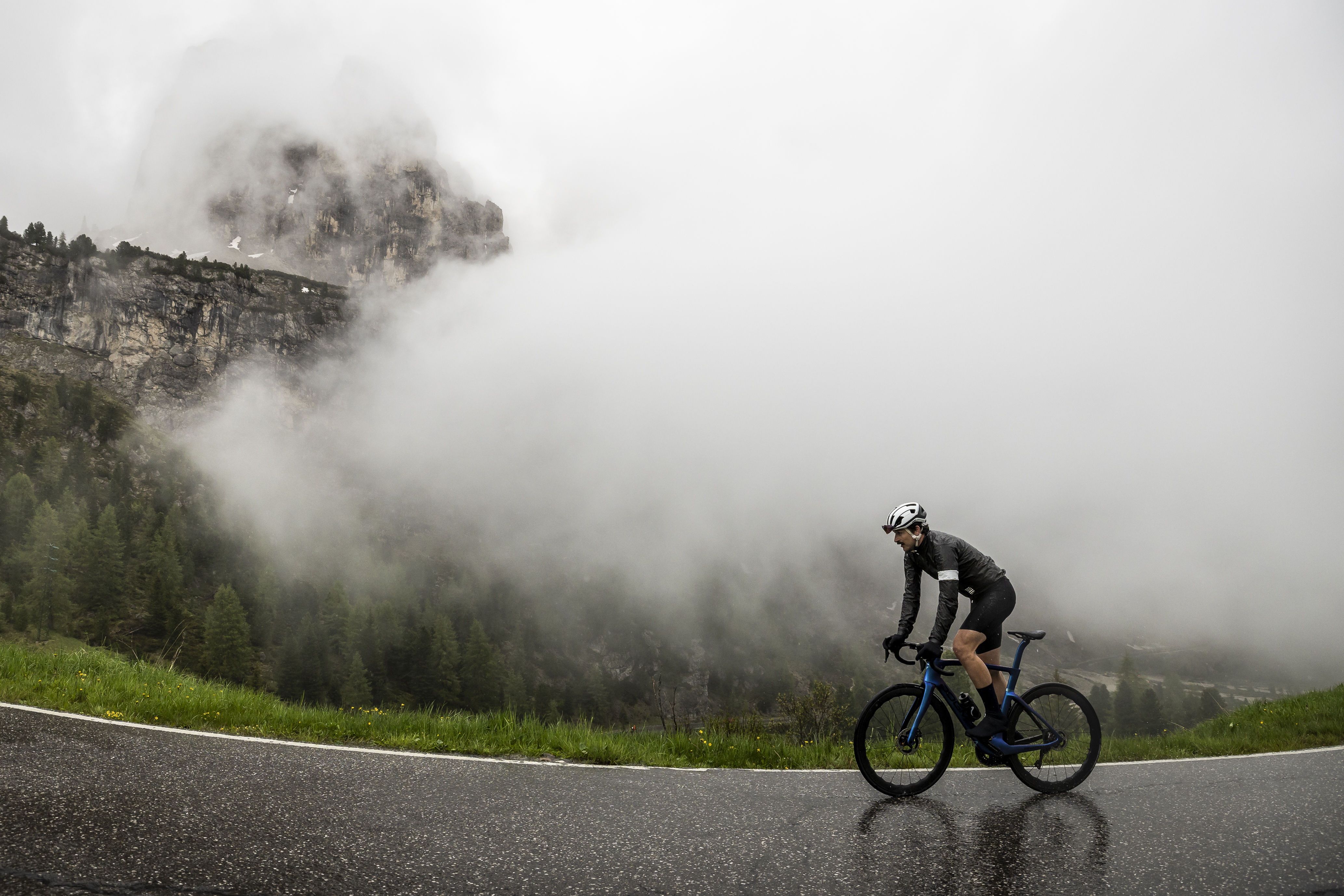
Value
The Dogma F is the most expensive of all the superbikes we sent into the wind tunnel. The £12,500 price tag is truly eye-watering, but in the context of modern superbikes it’s not that outlandish. It’s the same as a Cannondale SuperSix Evo Lab71, and ‘only’ £500 more than a top-spec S-Works Tarmac SL8.
It is a huge amount of money but this is without question one of the best, if not the best road bike on the market. By the numbers the Factor Ostro VAM perhaps makes more sense from a value perspective. It’s more aero, and lighter, and it also reviewed very well in the more fuzzy things too - cycling’s soft skills, if you will.
There is a part of me that always wonders if, were you in a position to drop 10-12k on a bicycle, you are in any way concerned with value. So yes, maybe it loses points here, but it does have that intangible heritage factor that a Factor, or even a Specialized doesn’t. It’s an expensive, beautiful, Italian superbike decked out with the best of the best of everything (yes, that means Dura-Ace nor Super Record), the absolute crème de la crème, but unlike something like the Colnago C68 which also possesses that intangible la dolce vita factor, it’s also got the performance to back up the looks. It’s a bit like that Swedish pole vaulter from the Olympics, Mondo Duplantis. Extremely easy on the eyes, but with more world records than you can shake a (very long) stick at.
It’s up to you whether you think that brand heritage is worth two and a half grand. I honestly think it’s part of the product, and it delivers on it in spades.
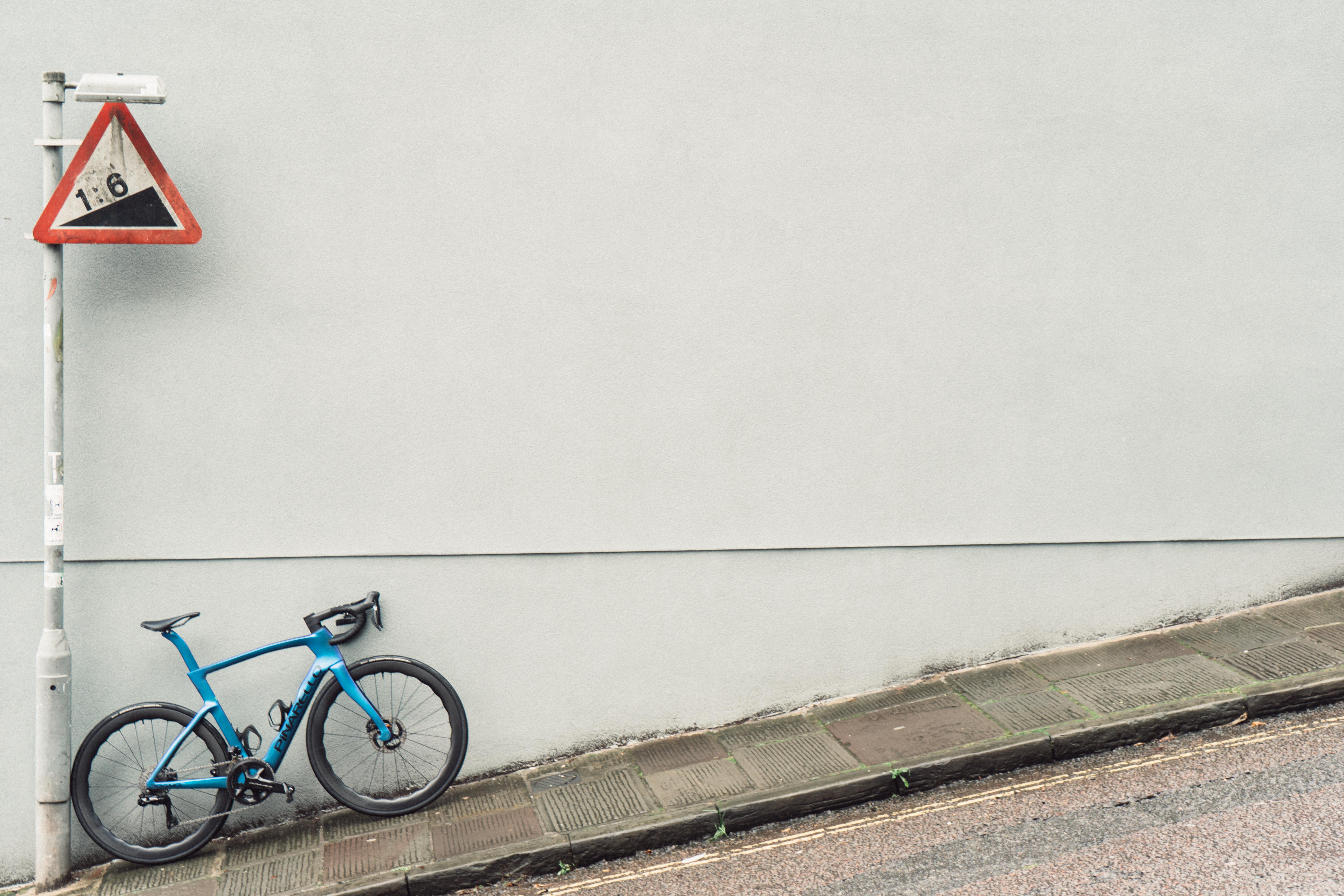
Verdict
I’ve ridden a lot of very, very good bicycles in my time here at Cyclingnews. Some of them excite me, and many of them I am sorry to send back. Some, it must be said, I am glad to be rid of afterwards, but that’s the nature of the job. Few have felt genuinely special in the way the Dogma F has. The way it marries together the often competing forces of Italian aesthetics and mind blowing performance is nothing short of miraculous. From a pure performance point of view it’s more or less faultless. It maybe loses out on an overall score to the Factor Ostro VAM by dint of being ever so slightly less aero, and a chunk of cash more expensive, but it stands apart as likely the most complete road bike I’ve ever ridden.
When I was about 14 I was gifted Jeremy Clarkson’s book, I Know You Got Soul; a compendium of articles about machines that have that certain something. Putting aside any conceptions of what you think about Clarkson as a person, he did write extremely well about a load of wonderful vehicles. I’ll likely never ride in a Spitfire, or cruise Lake Garda in a Riva Aquarama, but at least I got to ride a Dogma F in the Dolomites, and that’s basically the same thing.
| Attributes | Notes | Rating |
|---|---|---|
| Design and aesthetics | Beautiful, without any silly touches in the name of design flair | 10/10 |
| Build | I cannot think of anything that would have improved this bike in terms of build. | 10/10 |
| Performance | Came out well in the wind tunnel, handles like nothing else, and climbs even steep ramps with gusto. | 10/10 |
| Weight | Not class-leading, but on a par with other super high end race bikes | 9/10 |
| Value | There's no power meter, and while it's similarly priced to a Tarmac or SuperSix it is more expensive than the Factor Ostro by a noticeable amount. | 8/10 |
| Overall | Row 5 - Cell 1 | 94% |
A post shared by Will Jones (@zetlandcycles)
A photo posted by on
Get all of Cyclingnews’ premium articles in an easy-to-digest weekly form straight into your inbox with the Musette - our brand-new subscriber-only newsletter. Make the most of your subscription and sign up here.

Will joined the Cyclingnews team as a reviews writer in 2022, having previously written for Cyclist, BikeRadar and Advntr. He’s tried his hand at most cycling disciplines, from the standard mix of road, gravel, and mountain bike, to the more unusual like bike polo and tracklocross. He’s made his own bike frames, covered tech news from the biggest races on the planet, and published countless premium galleries thanks to his excellent photographic eye. Also, given he doesn’t ever ride indoors he’s become a real expert on foul-weather riding gear. His collection of bikes is a real smorgasbord, with everything from vintage-style steel tourers through to superlight flat bar hill climb machines.